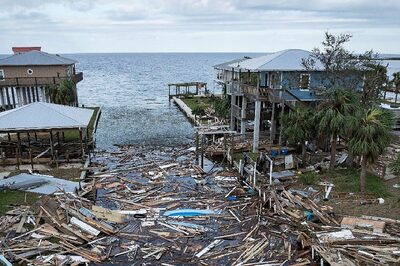
views
Using data from instruments aboard India's Chandrayaan-1 spacecraft, scientists have found evidence of water locked in mineral grains on the surface of the moon from an unknown source deep beneath the surface.
Using US space agency NASA's Moon Mineralogy Mapper (M3) instrument on the Indian Space Research Organisation's (ISRO) spacecraft, scientists remotely detected magmatic water, or water that originates from deep within the moon's interior, on the surface of the moon.
The findings of the National Aeronautics and Space Administration (NASA) funded research, published in Nature Geoscience, represent the first detection of this form of water from lunar orbit, the agency said.
Earlier studies had shown the existence of magmatic water in lunar samples returned during the Apollo programme, NASA said in a media release.
M3 imaged the lunar impact crater Bullialdus, which lies near the lunar equator. Its central peak is made up of a type of rock that forms deep within the lunar crust and mantle when magma is trapped underground.
"This rock, which normally resides deep beneath the surface, was excavated from the lunar depths by the impact that formed Bullialdus crater," said Rachel Klima, a planetary geologist at the Johns Hopkins University Applied Physics Laboratory (APL) in Laurel, Maryland.
"Compared to its surroundings, we found that the central portion of this crater contains a significant amount of hydroxyl -- a molecule consisting of one oxygen atom and one hydrogen atom -- which is evidence that the rocks in this crater contain water that originated beneath the lunar surface," Klima said.
In 2009, M3 provided the first mineralogical map of the lunar surface and discovered water molecules in the polar regions of the moon.
This water is thought to be a thin layer formed from solar wind hitting the moon's surface. Bullialdus crater is in a region with an unfavourable environment for solar wind to produce significant amounts of water on the surface.
The detection of internal water from orbit means scientists can begin to test some of the findings from sample studies in a broader context, including in regions that are far from where the Apollo sites are clustered on the near side of the moon, NASA said.
For many years, researchers believed that the rocks from the moon were bone-dry and any water detected in the Apollo samples had to be contamination from Earth, it said.




















Comments
0 comment